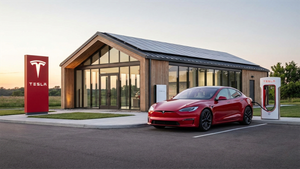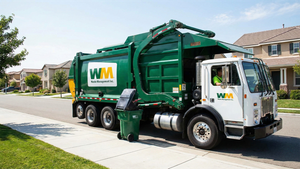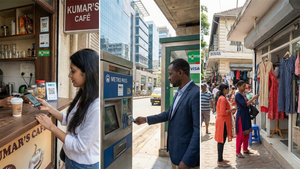
Costco Wholesale Corporation (NASDAQ: COST) is on the cusp of announcing its fourth-quarter fiscal year 2025 earnings, with analysts keenly anticipating strong results that underscore the retailer's resilience in a dynamic and challenging market. As consumers increasingly prioritize value in the face of persistent food inflation, and Amazon (NASDAQ: AMZN) aggressively expands its same-day grocery delivery services, Costco's unique membership-based model appears strategically positioned to navigate these powerful economic and competitive currents.
The upcoming earnings report, expected around September 25, 2025, will offer crucial insights into Costco's performance, particularly how it's leveraging its bulk-buying appeal and robust membership loyalty to thrive amidst an evolving retail landscape. The interplay of consumer spending habits, inflation, and intense e-commerce competition will be under a microscope, making this a pivotal moment for investors and industry observers alike.
Costco's Q4 Anticipation: A Beacon in Stormy Seas
Costco's Q4 fiscal year 2025 earnings are projected to reveal continued strength, with Wall Street analysts forecasting average revenue of $86 billion, signifying an approximate 8% increase year-over-year. Earnings per share (EPS) are expected to hit a consensus of $5.80, a robust 13% increase from the previous year. For the entire fiscal year 2025, the profit per share is estimated to rise by 11.6% to around $17.97-$18.03. These optimistic projections come despite what many analysts describe as a "challenging spending environment," signaling the enduring appeal and strategic advantages of Costco's business model.
A significant driver of Costco's consistent performance is its membership-based system, which not only generates a high-margin revenue stream—expected to reach $1.55 billion in fees—but also fosters unparalleled customer loyalty. The company recently increased its annual membership fees, a move expected to positively impact revenue in fiscal years 2025 and 2026. This loyalty is further evidenced by high global renewal rates, hovering around 90.2%. Costco's ability to offer competitive prices on bulk goods becomes an even more powerful draw during inflationary periods, where consumers are actively seeking ways to stretch their budgets. In some cases, Costco has strategically reduced prices on popular Kirkland Signature items to reinforce its value proposition, demonstrating a proactive approach to managing costs and consumer perception. The company continues to expand its physical footprint, planning to open 29 new warehouses in fiscal 2025, balancing domestic and international growth. Furthermore, Costco's e-commerce sales have seen significant growth, reportedly up 18.9% year-over-year in Q4 2024, demonstrating its adaptation to digital retail trends.
Winners and Losers in the Value-Driven Market
The current financial climate is creating clear delineations between potential winners and those facing uphill battles, particularly in the intensely competitive grocery sector.
Costco (NASDAQ: COST) emerges as a strong contender for a "winner" in this environment. Its membership model, offering bulk discounts on a curated selection of products, directly appeals to value-conscious consumers grappling with rising costs. The company's consistent ability to beat earnings expectations—as seen in three of the last four quarters leading up to Q3 2025, where it reported a diluted EPS of $4.28 against estimates—highlights its operational efficiency and customer retention. While some analysts note its stock might be perceived as overvalued given its high price-to-earnings ratio, its fundamental strengths remain compelling.
Amazon (NASDAQ: AMZN), while a formidable long-term player, faces significant challenges in fully capitalizing on the grocery market in the short term, despite its aggressive expansion. Amazon is heavily investing in same-day grocery delivery, aiming to serve over 2,300 U.S. cities by year-end 2025, offering free delivery for Prime members on orders over $25. This move intensifies the competitive landscape, causing a dip in Costco's stock following Amazon's announcement. However, Amazon still struggles with profitability in the grocery sector and building consistent consumer trust for fresh food. Its physical footprint in grocery, through Whole Foods Market and Amazon Fresh, remains relatively small compared to traditional giants, hindering its ability to fully capture the essential brick-and-mortar grocery market share.
Other major retailers are also deeply affected. Walmart (NYSE: WMT) stands as a dominant force and clear winner, leveraging its immense scale, robust supply chain, and hybrid omnichannel model to maintain over one-fifth of all U.S. grocery spending. Its unwavering focus on price leadership resonates powerfully with consumers experiencing food inflation. Kroger (NYSE: KR), while holding its own with an extensive network and strong loyalty programs, faces continuous pressure to enhance its digital operations and compete with Amazon's advancements. Its proposed merger with Albertsons (NYSE: ACI) also faces ongoing antitrust scrutiny, highlighting the increasing consolidation in the grocery space. Ultimately, consumers are the primary "winners" of the heightened competition for value, as retailers like Costco and Walmart vie to offer the most affordable options during economic pressures.
Industry Impact and Broader Implications
The confluence of Costco's strong performance, Amazon's grocery ambitions, and persistent food inflation is reshaping the retail and grocery industries, driving significant shifts in consumer behavior and competitive strategies. This scenario highlights several broader trends.
The most evident trend is the accelerating shift towards value and private labels. With U.S. food inflation persisting—grocery prices up 2.7% year-over-year in August 2024 and a staggering 32.1% since 2019—consumers are hyper-focused on affordability. This pushes them towards value-oriented retailers like Costco, whose bulk savings become indispensable. It also fuels the growth of private-label brands, which offer more affordable alternatives to national brands, putting pressure on Consumer Packaged Goods (CPG) manufacturers to justify premium pricing.
Secondly, the emphasis on omnichannel retail and digital transformation is undeniable. Amazon's aggressive push into same-day grocery delivery forces all retailers to invest heavily in their e-commerce capabilities, delivery infrastructure, and in-store technology. Traditional grocers are racing to improve online ordering, curbside pickup, and last-mile delivery to meet evolving customer expectations for convenience. This includes integrating various fulfillment networks and experimenting with new store formats to provide a seamless shopping experience.
The enduring challenge of supply chain optimization and resilience is also amplified. Disruptions in global supply chains, coupled with rising input costs (labor, fuel) and geopolitical events, continue to contribute to food inflation. Retailers are increasingly focusing on leveraging AI and data analytics to streamline logistics, manage inventory, and enhance efficiency in delivering perishable goods to mitigate these pressures.
The ripple effects of these trends are far-reaching. Warehouse clubs like Sam's Club (NYSE: WMT indirectly, as a subsidiary) will likely intensify their focus on membership benefits and digital strategies. Traditional supermarkets face significant competitive pressure, leading to further consolidation, increased investment in private brands, and aggressive pricing strategies. CPG manufacturers must innovate and adapt to retailer and consumer demand for value, potentially engaging in more intense supplier negotiations. From a regulatory standpoint, Amazon's expanding market dominance in grocery invites greater antitrust scrutiny regarding competitive fairness and data privacy, while governments may also face pressure to address food inflation through policy interventions. Historically, periods of high food inflation, such as the 1970s, have consistently led to increased consumer focus on value and discounters, drawing parallels to today's market dynamics where efficient, low-cost operators like Costco thrive.
What Comes Next
Looking ahead, the retail and grocery landscape will be defined by continued adaptation and strategic maneuvers from key players. For Costco, the immediate future appears robust. Its anticipated strong Q4 earnings and the upcoming membership fee increase are expected to provide a tailwind for revenue growth in fiscal years 2025 and 2026. The company's ongoing global expansion and efforts to integrate its growing e-commerce capabilities with its physical stores will be crucial for sustained long-term growth, as it seeks to maintain its value proposition amidst competition and rising costs.
Amazon's intensified grocery competition signals a prolonged "arms race" in digital retail. In the short term, its aggressive expansion of same-day fresh food delivery will undoubtedly pressure traditional grocers and third-party delivery services, potentially leading to margin erosion and shifts in market share. Long-term, Amazon's strategic focus on speed, personalization, and AI-driven efficiency will compel all competitors to significantly invest in their digital infrastructure. The U.S. grocery delivery market is projected to reach $327.72 billion by 2030, positioning Amazon to capture a substantial share through its integrated Prime ecosystem and dual-income model (sales plus advertising).
Persistent food inflation will continue to shape consumer behavior in the short term, with an ongoing emphasis on promotions, private label brands, and value offerings. Consumers will likely continue making more frequent, smaller shopping trips and gravitating towards mass, club, and e-commerce stores perceived as offering better value. Long-term, the focus on affordability will persist, driving retailers to enhance loyalty programs and innovate further with store brands. Sustainability and efforts to reduce food waste and packaging will also become increasingly critical by 2030, driven by both consumer demand and regulatory pressures. Potential scenarios include a "Digital Dominance" model, where tech-forward players like Amazon dominate online grocery leading to market consolidation, or a "Value-Driven Resurgence," where Costco and other traditional retailers thrive by optimizing physical stores and leveraging digital tools for efficiency. Retailers must prioritize omnichannel integration, reinvent their value propositions, and harness AI to optimize operations and personalize the customer experience to succeed in these evolving scenarios.
Conclusion
Costco's impending Q4 earnings report is more than just a financial disclosure; it's a barometer of consumer resilience and the enduring power of a value-driven, membership-based retail model. In a market profoundly influenced by persistent food inflation and the relentless digital expansion of giants like Amazon, Costco continues to demonstrate its strategic positioning and operational agility. Its ability to offer competitive prices on bulk goods, coupled with a loyal membership base, provides a significant hedge against economic headwinds, making it a key player in the evolving retail landscape.
Moving forward, investors should closely monitor Costco's comparable sales, membership growth rates, and e-commerce performance to gauge its continued momentum. The ongoing battle for grocery market share, particularly between physical and digital storefronts, will compel all retailers to continuously innovate their omnichannel strategies, enhance their value propositions, and leverage technology like AI to meet dynamic consumer demands. The lasting impact of this period will be a redefined retail experience where value, convenience, and technological integration are paramount for long-term success and market leadership. The coming months will undoubtedly offer further clarity on how these powerful forces continue to reshape the way we shop and what we prioritize in our purchasing decisions.





